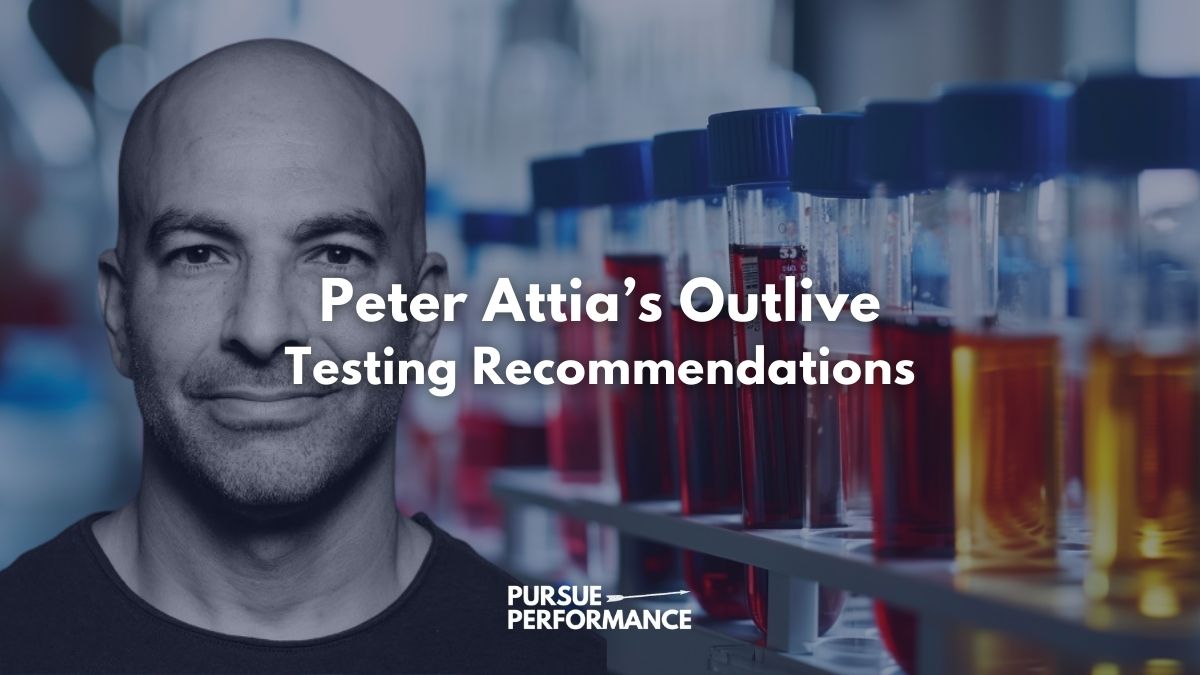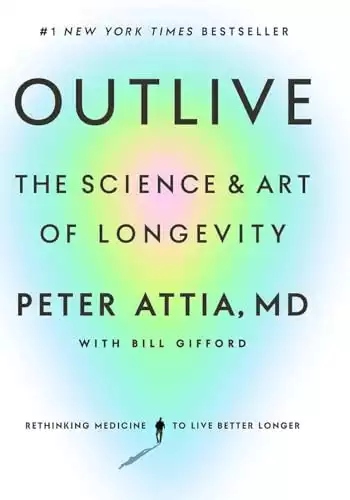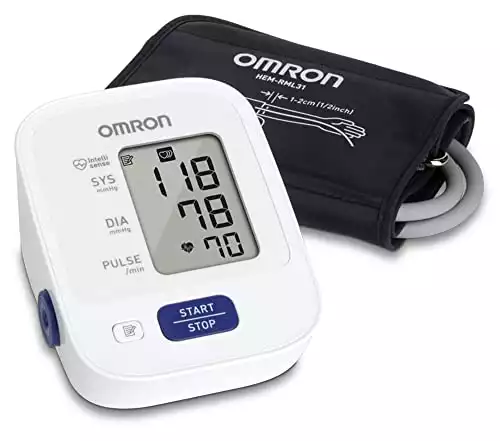Dr. Peter Attia, founder of The Drive podcast and longevity clinic The Attia Medical Practice, believes optimizing health biomarkers through testing can significantly extend health span and lifespan.
In his book Outlive and appearances on health podcasts, Attia recommends tracking several key biomarkers not routinely tested.
He advises testing as early as your 30s to establish baselines and make interventions.
In this post, we will outline all of Dr. Peter Attia’s testing recommendations from his book Outlive and other sources, as well as his rationale for why each one is important.
A comprehensive guide combining medical advice, personal anecdotes, and factual insights aimed at living a longer, healthier life.
Let’s get started!
Key Takeaways:
| Test | Recommended Age | Target Ranges & Goals | Rationale and Additional Notes |
|---|---|---|---|
| ApoB | 30s | Ideal: 20-30 mg/dL Good: Under 60 mg/dL | Better predictor of heart disease risk than LDL-C. Reflects number of LDL particles which are directly linked to risk. |
| Lp(a) | As early as 30s | Ideal: Below 14 mg/dL High Risk: Above 50 mg/dL | Genetic risk factor for heart disease. Elevated levels contribute to artery plaque formation. |
| Omega-3 Fatty Acids | Not specified | 8-12% combined EPA + DHA level | Important for heart and brain health. Reduces inflammation and supports cognitive function. |
| Blood Pressure | Regular monitoring | Less than 120/80 mmHg | Indicator of heart and artery health. High levels can cause damage over time. |
| Continuous Glucose Monitoring (CGM) | Regular monitoring | Average <100 mg/dL Standard deviation <15 mg/dL Avoid spikes over 160 mg/dL | Helps optimize blood sugar levels for metabolic health. Personalizes nutrition and lifestyle adjustments. |
| DEXA Scans | Not specified | Low visceral fat percentile Positive T-score for bone density | Measures body fat percentage, lean mass, and bone mineral density. Important for assessing visceral fat and bone health. |
| CT Angiograms | By age 40 | No detectable plaque | Screens for plaque buildup in arteries, indicative of increased heart attack and stroke risk. |
| Cancer Screenings | Colorectal: 40 Prostate: 45 | Regular screenings as per doctor’s advice | Early detection of colorectal and prostate cancers. Personalized approach may vary. |
Heart Health Tests
Heart disease is one of the leading causes of death, so getting the right tests to assess your cardiac risk is critical.
Two important tests that provide a more complete picture of heart health are apoB and Lp(a).
For Professor Andrew Huberman, InsideTracker is a highly recommended testing option.
What is ApoB?
ApoB stands for apolipoprotein B.
It is a protein that carries LDL cholesterol (the “bad” cholesterol) in the bloodstream.
Doctors traditionally look at LDL-C levels to assess heart disease risk.
However, Dr. Attia believes ApoB is a better predictor because it accounts for all the atherogenic (artery-clogging) particles in the blood, not just LDL.
So, while LDL-C measures the amount of cholesterol carried by LDL particles, ApoB measures the number of LDL particles themselves.
More particles means more risk, even if the total cholesterol they carry is not extremely high.
ApoB Target Ranges

Most doctors only worry about ApoB levels above 100 mg/dL.
Dr. Attia recommends more aggressive goals:
- Ideal: 20-30 mg/dL
- Good: Under 60 mg/dL
This is because any ApoB above the bare minimum needed for living (~20 mg/dL) increases heart disease risk.
Getting levels as low as possible in your 30s and 40s helps ensure optimal heart health as you age.
Lowering ApoB
Ways to lower ApoB include:
- Cardio exercise to burn fat and increase HDL (“good” cholesterol)
- Consuming less dietary fat and cholesterol
- Eating more fiber to reduce cholesterol absorption
- Taking cholesterol-lowering medications like statins
- Quitting smoking, which raises ApoB
What is Lp(a)?
Lp(a) is another genetic risk factor for heart disease that contributes to artery plaques.
About 20-30% of people have elevated Lp(a) levels.
Since Lp(a) is largely genetic, levels don’t respond much to lifestyle changes. But testing once gives you your baseline risk.
Lp(a) Target Ranges
- Ideal: Below 14 mg/dL
- High Risk: Above 50 mg/dL
If Lp(a) is high, aggressively lowering ApoB through diet, exercise, and medication becomes even more important.
Lowering Lp(a)
Options for lowering high Lp(a) are limited, but include:
- Medications called PCSK9 inhibitors (not fully approved yet)
- Lowering ApoB levels as much as possible
These two tests provide a more complete picture of heart disease risk beyond just LDL cholesterol.
Knowing your levels allows personalized strategies to reduce risk through lifestyle and medication.
Omega-3 Fatty Acids
Omega-3 fatty acids like EPA and DHA play important roles in heart and brain health.
That’s why testing blood levels of EPA and DHA provides useful insights.
EPA and DHA are long-chain fatty acids that provide many health benefits, which is why Professor Andrew Huberman also recommends fish oil.
They help reduce inflammation, support cognitive function, and promote cardiovascular health.
The American Heart Association recommends getting at least 250-500 mg per day of EPA/DHA to reduce heart disease risk.
When testing Omega-3 levels, the goal is to have a combined EPA + DHA level between 8-12%.
This optimal range is associated with lower risk of chronic diseases.
The average American has a combined level around 4-5%, so there is room for improvement.
It takes about 4 months of consistent omega-3 intake from fatty fish or supplements to significantly increase EPA and DHA blood levels.
So testing gives you a snapshot of your average omega-3 consumption over time.
- Superior absorption
- Improves brain blood flow
- Ideal DHA/EPA ratio
Some ways to raise EPA and DHA levels include eating fatty fish like salmon 2-3 times per week, taking fish oil supplements, and consuming more foods rich in alpha-linolenic acids like walnuts, flaxseeds, and chia seeds.
Blood Pressure
Monitoring blood pressure routinely provides vital insights into the health of your heart and arteries.
High blood pressure causes damage over time if not properly controlled.
Blood pressure is a measurement of the force blood exerts on artery walls as it circulates.
It gives two numbers – systolic pressure as the heart contracts, and diastolic as the heart relaxes between beats.
For ideal cardiovascular health, experts recommend maintaining a blood pressure less than 120/80 mmHg.
This optimal target helps ensure minimal stress on the heart, brain, kidneys and arteries as you age.
To get accurate average blood pressure readings, it’s important to check levels consistently at the same times each day.
Dr. Attia recommends checking blood pressure twice daily for two weeks. This helps provide an accurate baseline to guide treatment.
If blood pressure is higher than ideal, lifestyle changes and medications may be needed to reduce hypertension
Some ways to lower blood pressure include losing weight if overweight, reducing sodium intake, exercising regularly, managing stress, and getting adequate sleep.
Continuous Glucose Monitoring

Using a continuous glucose monitor (CGM) provides detailed data to optimize blood sugar levels for metabolic health.
Lower averages, variability and spikes are ideal.
CGMs measure interstitial fluid glucose levels every few minutes via a sensor inserted under the skin.
This gives dynamic data to assess how diet, exercise, sleep and other factors affect your blood sugar.
Ideal CGM targets are:
- Average glucose <100 mg/dL
- Standard deviation <15 mg/dL
- Avoiding spikes over 160 mg/dL
Having chronically elevated blood sugar can increase the risk of type 2 diabetes, cardiovascular disease, and even Alzheimer’s.
A CGM helps you personalize nutrition and lifestyle to keep blood sugar in a healthy range.
Ways to improve CGM glucose levels include following a low glycemic diet, eating more fiber, exercising regularly, losing excess weight, reducing stress, and certain medications like metformin if needed.
Routine CGM monitoring provides insights to optimize diet, activity, and lifestyle for blood sugar control and metabolic health.
DEXA Scans
DEXA scans measure body composition, providing data on visceral fat and bone health.
A DEXA scan uses low-dose X-rays to measure body fat percentage, lean mass, and bone mineral density.
Two key health metrics from a DEXA scan are visceral fat and bone density.
Visceral fat is the dangerous fat that accumulates around organs in the abdomen.
Excess visceral fat causes inflammation and raises disease risk.
The goal is to have as low a percentile of visceral fat as possible for your age and gender.
Bone mineral density indicates bone strength and risk of osteoporosis.
You want a positive T-score, meaning your bone density is higher than average for a healthy 30 year old.
Low bone density raises fracture risk as you age.
For bone density, research shows weight-bearing and resistance exercises are most effective. Nutrients like calcium, vitamin D, and protein also support bone health.
CT Angiograms
A CT angiogram takes detailed images of the heart to screen for plaque buildup in arteries.
Dr. Attia recommends getting one by age 40.
Plaque narrows arteries and reduces blood flow, increasing the risk of heart attack and stroke.
A CT angiogram uses X-rays and contrast dye to visualize plaque in the coronary arteries. This allows early detection and treatment.
The ideal result is no detectable plaque.
Finding plaque means steps should be taken to halt progression through improving risk factors like high cholesterol.
Aggressively lowering LDL and ApoB cholesterol levels through diet, exercise, and medication helps reduce plaque over time.
Quitting smoking and controlling blood pressure are also important.
Cancer Screenings
Dr. Attia believes men should start colorectal and prostate cancer screening earlier than standard recommendations.
For colorectal cancer, he advises men get a colonoscopy starting at age 40, and repeat every 2-3 years after.
This helps detect tumors early when they are most treatable.
For prostate cancer, Dr. Attia recommends PSA blood testing start by age 45.
Further testing like evaluating PSA velocity and density can clarify if abnormalities on a PSA test warrant a biopsy.
Earlier screening improves odds of catching these common cancers at early stages.
However, patients should also discuss the pros and cons of early testing with their doctors.











